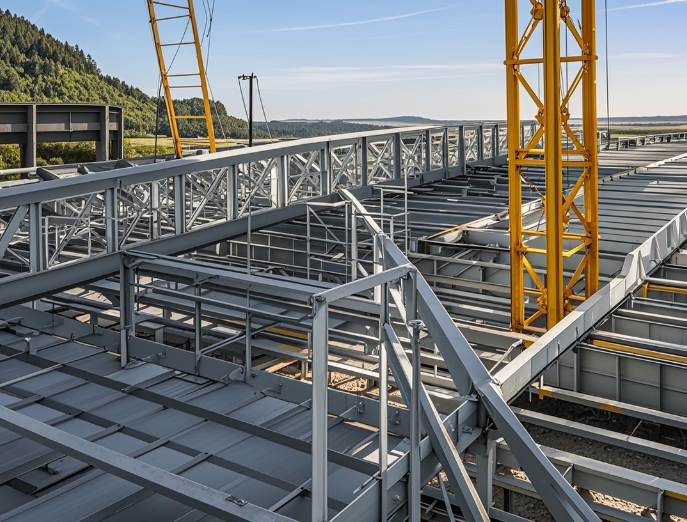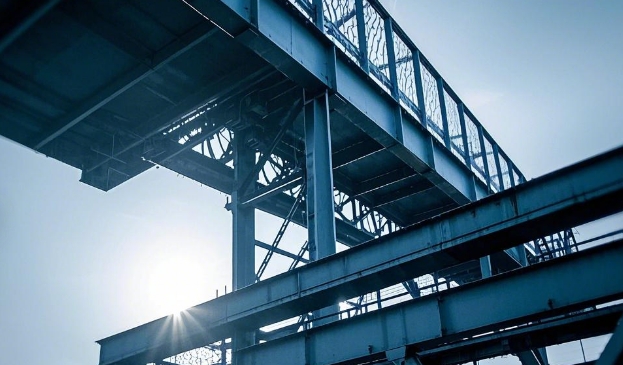Application of Common Welding Methods in Mesh Structure Steel Structures!
更新时间:2025-02-17 15:38:58•点击:67908 • Industry Views
Basic concepts of welding
Welding is a connection method that achieves interatomic bonding of welded parts by heating, pressure, or a combination of both, with or without the use of filler materials. Welding is a key technology for connecting members in mesh steel structures. Its main advantage lies in its ability to effectively ensure the integrity of the structure. Compared to other connection methods, welding can improve the performance of the structure when subjected to loads, reduce stress concentration, and thus enhance the stability and load-bearing capacity of the structure.The generation and effect of welding arc
The most commonly used method for welding steel structures in mesh structures is arc welding. The welding arc is supplied by the welding power source and produces a strong and persistent gas discharge phenomenon between the two poles. Taking manual arc welding as an example, when the welding rod and the workpiece come into contact and quickly separate, under the action of an electric field, the gas at the end of the welding rod and the surface of the workpiece is ionized, forming a conductive channel and generating a high-temperature arc. The arc temperature is extremely high, reaching 5000-8000 ℃, which can quickly melt the welding rod and workpiece locally.
Formation process of weld seam
Heating and melting stage: The heat generated by the arc rapidly melts the end of the welding rod and the surface of the workpiece, forming a molten pool. During this process, the electrode coating (or flux) decomposes and melts at high temperatures, producing protective gas and slag to protect the molten metal from oxidation.
Metallurgical reaction stage: The melted metal undergoes metallurgical reaction with the alloy elements in the welding rod (or wire), adjusting the chemical composition of the weld metal to meet performance requirements. For example, adding alloying elements can improve the strength, toughness, and corrosion resistance of welds.
Crystallization and phase transformation stage: With the movement of the arc, the molten pool cools and solidifies, and the weld metal undergoes crystallization and phase transformation, forming a weld with certain microstructure and properties. The cooling rate has a significant impact on the microstructure and properties of the weld seam. Rapid cooling may lead to an increase in weld hardness, a decrease in toughness, and even the formation of cracks.
Welding heat affected zone
During the welding process, the microstructure and properties of the base material near the weld seam will change due to heat, and this area is called the welding heat affected zone. The size and degree of change in microstructure and properties of the heat affected zone are related to factors such as welding process parameters, steel composition, and weld thickness. For example, the larger the welding current and the slower the welding speed, the larger the heat affected zone. The mechanical properties (such as strength, hardness, toughness, etc.) of the heat affected zone may undergo significant changes compared to the base material, which may result in reduced strength, decreased plasticity and toughness, and in severe cases, may affect the safety of the structure. Therefore, it is necessary to control the welding parameters reasonably during the welding process, reduce the adverse effects of the heat affected zone, such as adopting appropriate preheating and post heating measures, and controlling the cooling rate.
Manual arc welding: With simple equipment and flexible operation, it is suitable for welding in various positions and shapes, especially on construction sites. For complex nodes and parts that are difficult to achieve automated welding, manual arc welding has irreplaceable advantages. But it also has disadvantages such as low efficiency, high labor intensity, and welding quality being greatly affected by the welder's technical level.
Gas shielded welding: such as carbon dioxide gas shielded welding and argon arc welding, which use shielding gases (such as carbon dioxide, argon, etc.) to protect the molten pool and welding area, prevent harmful gases from entering the air, and thus obtain high-quality welds. Gas shielded welding has the advantages of fast welding speed, high weld quality, and small deformation. It is widely used in the welding of mesh structure steel structures, especially for parts that require high weld quality.
Submerged arc automatic welding: The arc burns under the flux layer for welding, with high automation, fast welding speed, and good weld quality. It is suitable for welding long straight welds and thicker workpieces. But it is only suitable for flat welding positions and requires high precision in welding assembly.
Recommended Reading
-
Full analysis of seismic design and maintenance of grid structure
2025-02-27 16:16:52•1196402 次
-
What are the key process points to follow in order to ensure the quality of grid processing?
2025-02-27 11:21:00•115679 次
-
What type of construction is the grid mainly suitable for?
2025-02-25 16:42:00•111897 次
-
Quality control requirements of grid manufacturers!
2025-02-25 16:02:44•208064 次







